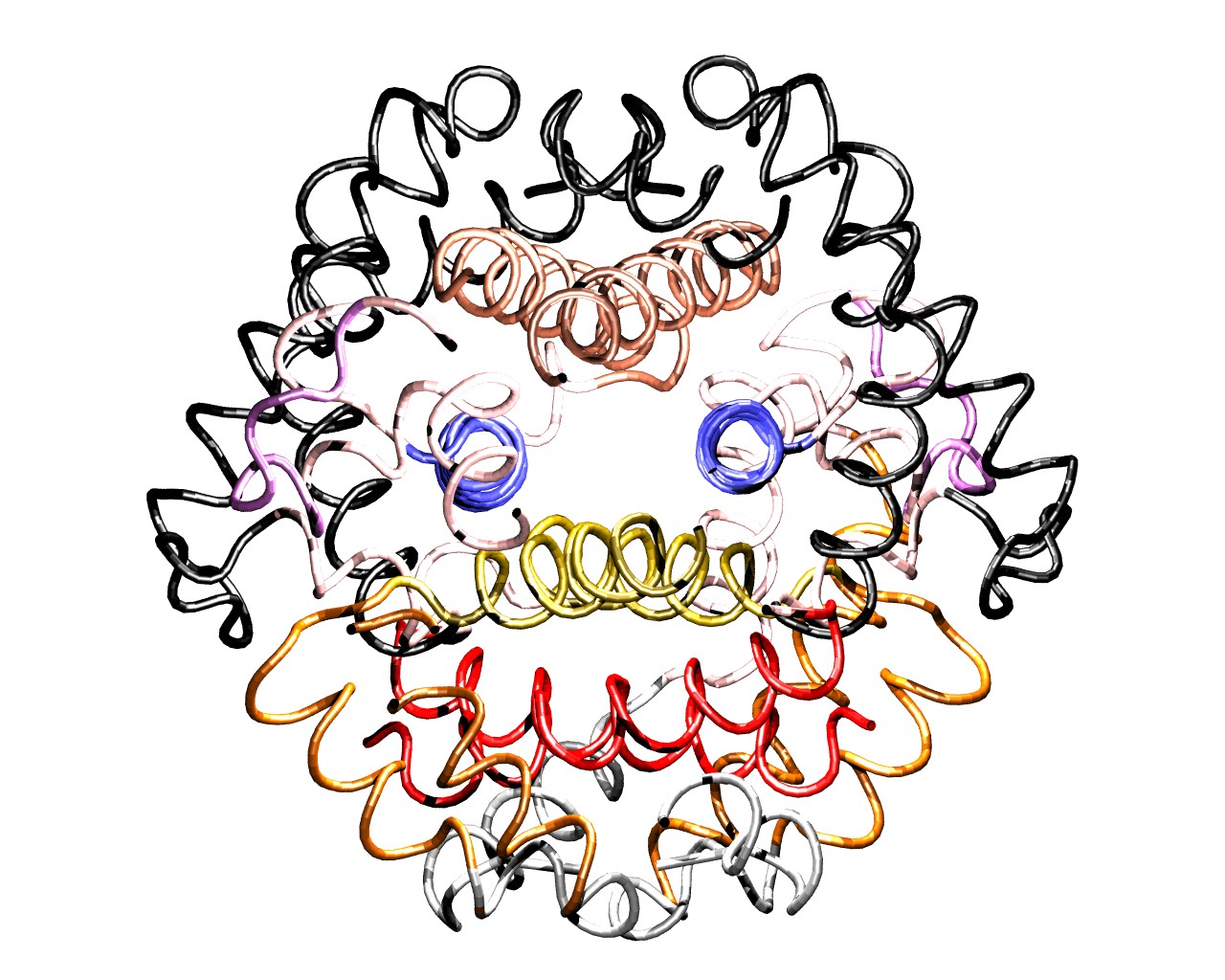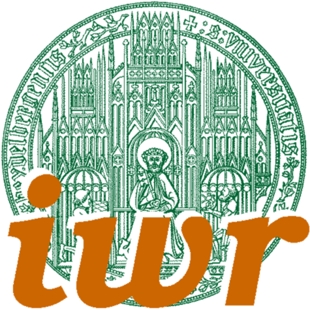|
|
Computational
Biochemistry Group
Molecular
modeling and simulation of biological macromolecules.
|
|
|
|
Head: Stefan Fischer
University of Heidelberg Interdisciplinary Center for Scientific
Computing (IWR) Secr.: +49 (6221) 5414.736 stefan.fischer@iwr.uni-heidelberg.de |
|
Research interests
Proteins are the little
"machines" that perform all the tasks in living systems. To
understand in a quantitative way how they function at the atomic level of
detail, it is necessary to use computer simulations, because there are no
experimental techniques that would allow to observe all the atoms of a protein
on the ultra-fast time-scale of their motion (which is on the order of 10-14 seconds). Our main research focus has
been on protein nanomachines, such as molecular motors, trans-membrane pumps
and channels and catalytic enzymes.
Aside from using the now standard Molecular Dynamics methods, we develop
algorithms for finding reaction paths and transition states in high-dimensional
systems. This enables us to study complex biomolecular processes that occur on
time-scales beyond the scope of standard molecular dynamics (i.e., slower than
micro-seconds), such as the motions of molecular motors in muscle. We also use
combined quantum/classical mechanics (QM/MM), which allow to accurately study
chemical reactions inside proteins, such as occurring in enzymatic catalysis.
For all these different systems, we closely collaborate with experimental
research groups. The resulting knowledge serves to optimize processes in
biochemical engineering, to inspire developments in the nanotechnologies, and
to help pharma and biotechnological research.
Research projects:
- Molecular motors.
- Structural mechanism of the Actin/Myosin
motor during muscle contraction:
- ATP-induced unbinding of myosin from
actin, a.k.a. the rigor dissociation step (movies for
article in PNAS, vol.108).
- The recovery stroke of myosin.
- Mechanics of the recovery stroke (movies for article
in PNAS, vol.102).
- Coupling between ATPase-activation and
recovery-stroke (movies
for article in Structure, vol. 15).
- Principal motions of the
recovery-stroke (movies
for article in J.Mol.Biol., vol. 367).
- Hydrolysis of ATP in myosin (movies for article in Biochemistry,
vol.45).
- The power stroke of myosin.
- Actin-fibril structure and contractile
regulation.
3.
Structure,
motion and flexibility of isolated Tropomyosin (movies for the articles
in J.Mol.Biol. vol. 395, and J.Struct.Biol. vol.170).
- Light-driven trans-membrane pumps.
- The chloride-pump halorhodopsin
- Mechanism of the molecular valve (movies for article in Structure,
vol.13).
- Storage of the photo-energy (movies for
article in J. Biol. Chem., vol.284)
- The proton-pump bacteriorhodopsin
:
- The primary proton transfer (movies for article in Structure,
vol.12).
- Primary proton transfer via water-B (movies
for article in J. Phys. Chem. B, vol. 112)
- The thermal back-isomerization of retinal
(movies for
article in J. Phys. Chem. B, vol.109).
- Water pathways across retinal in
bacteriorhodopsin (movies
for article in J. Membr. Biol., vol.239)
- Catalytic mechanism of enzymes.
- Complex functional changes of protein
conformations.
- Development of simulation methods.
- Molecular Kinematics of
macromolecules.
- Algorithms for mapping out reaction
paths: CPR and Transition
Networks
- Computing the free energy along reaction
paths.
- Combined quantum/classical (QM/MM)
calculations.
- Fast methods for the prediction of
ligand-binding affinities.
- Motion of ligands in proteins.
- Methotrexate flip in DHFR (has a movie).
- Rotation
of water in ice and BPTI (has a movie).
- Sugar transport through the maltoporin
membrane-channel (movies for
article in Structure, vol.10).
- Folding and unfolding simulations of
proteins.
- Folding trap by a salt-bridge in Staphylococcal
Nuclease (movies for
article in Proteins, vol.50).
Publications
Teaching
Masters/PhD/Postdoc positions

